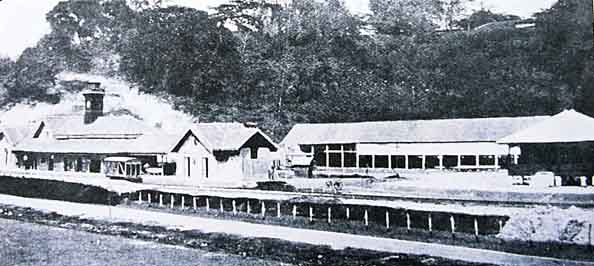
Singapore Railways
There were two stations near Tank Road but contrary to most reports the first on was not alongside Tank Road and was simply known as Singapore. It was built in 1902 and opened in 1903. Maps show that the first station was located at the southern end of Canning Park opposite the junction of the old Ord Road and River Valley road, in the same location as the later built van Kleef Aquarium. The first two pictures are of that Singapore station. In 1906 construction of an extension to Pasir Panjang started and a new station was built just north of Fort Canning/Oxley Road, which were later linked and crossed the railway and Tank Road via a bridge. The extension opened in 1907 and the remaining photographs show this station. The line from Tank Road to Peoples Park ran underneath what is now the southbound lanes of Clemenceau Avenue.
Singapore railway station, 1903-1907 (passengers), 1907-1932 (goods).

Above: The first Singapore station (1903-1907) looking north-east with Fort Canning hill in the background.
Below: The first Singapore station looking south-west with the works of Howarth Erskine beyond River Valley Road.
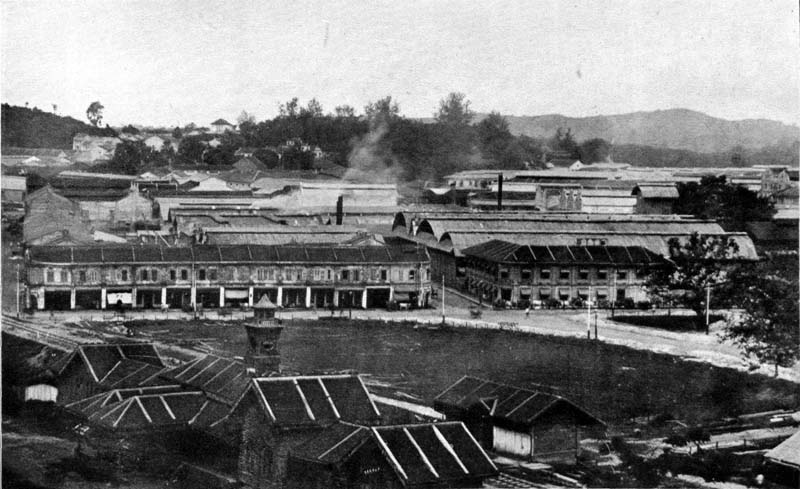
Click here for a 1924 map showing the area around Fort Canning and the layout of the railway in 1924. The original Singapore station, opened in 1903, was at the southern foot of Fort Canning opposite Read Road. The junction of the new branch through Peoples Park to Pasir Panjang was to the north-west of this station so a new station was built at Tank Road, about a third of a mile away and opened with the branch in 1907. The old station was retained for goods use but the building had presumably gone by 1924 as it is not shown on the map. After the closure to passenger services in 1932 the goods traffic soon dwindled away and most of the track was lifted by about 1937. It is thought the section from Tank Road to Tanjong Pagar was the last to see use with minimal traffic for the docks.
Tank Road Station 1907 - 1932
All the following pictures, taken from postcards of the period, are dated variously c1900 to c1910 except the second which is dated c1903 and c1905, it is therefore not possible to put them in precise chronological order, especially as construction of this station only started in 1906 and it did not open until 1907!
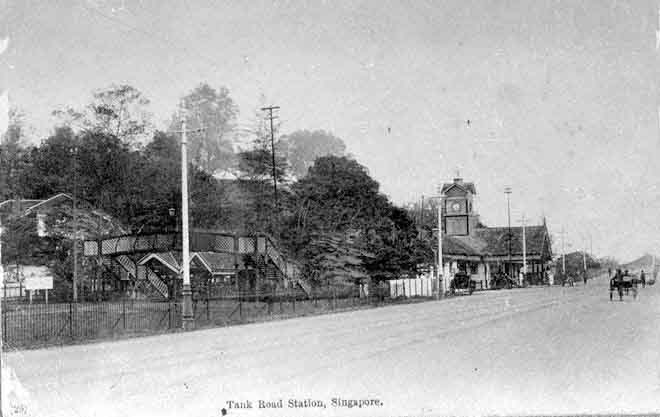
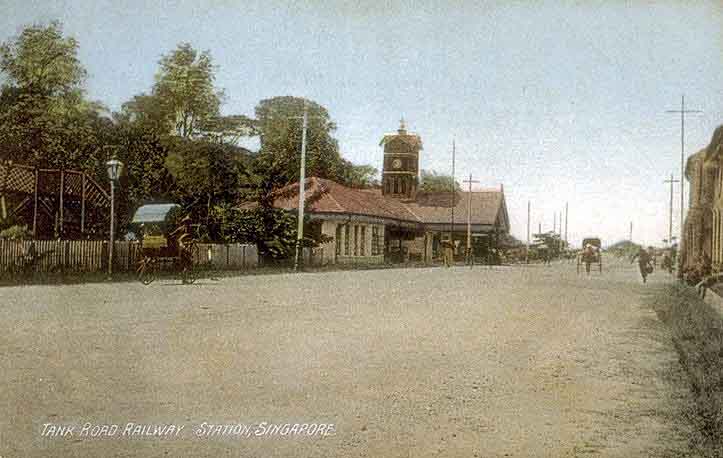
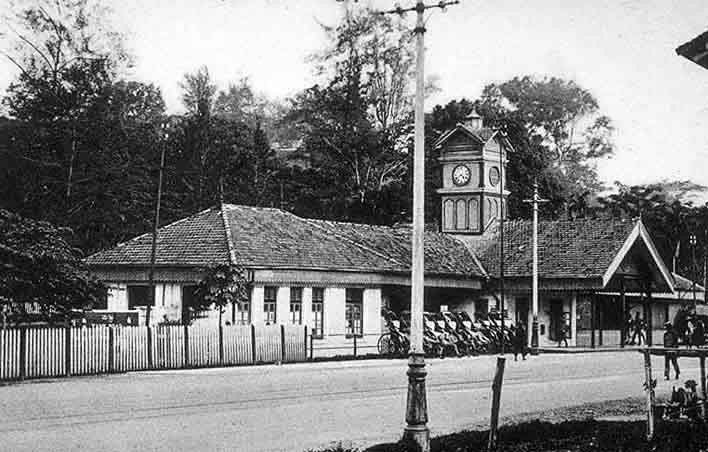
ABOVE: 3 views looking southwards across Tank road possibly between 1906 and 1910. Note that in one picture the tracks are not visible but a gas lamp has appeared.
BELOW: Another view looking across Tank road supposedly between 1903 and 1905. The railway tracks are beyond the building, those in the foreground being a tramway. The steam tramway closed in 1895 and the electric tramway opened in 1905 and the pictures must be 1906 or later.
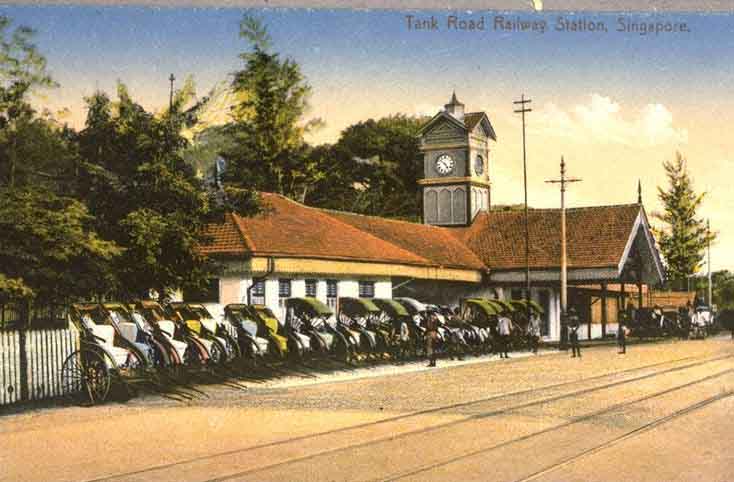
The next five pictures all appear to have been taken from the same vantage point, perhaps another bridge as the last one has moved some way to his right to clear the extra track which has been added. I used the appearance of additional buildings on the far side of the road and the extensions to the station buildings to try and sort them into chronological order.
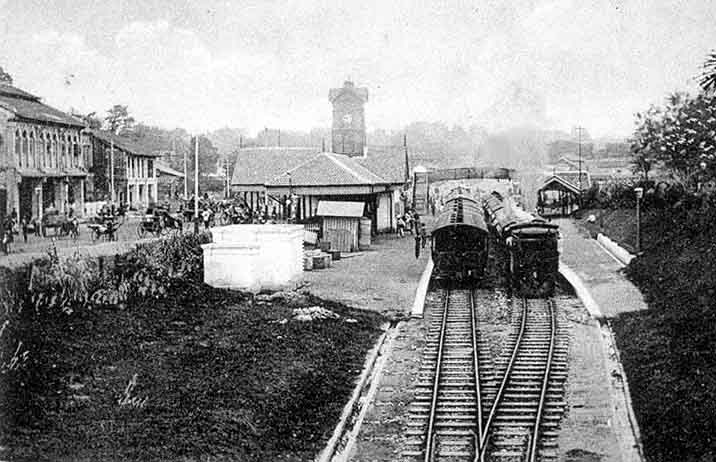
Above: This picture was probably taken shortly after the station opened in 1906.
Below: The completion of a new building on the left and the growth of the tree suggest a few years have elapsed. Also the main platform has been tidied up and the loop platform shelter now has a partly closed nearer end.
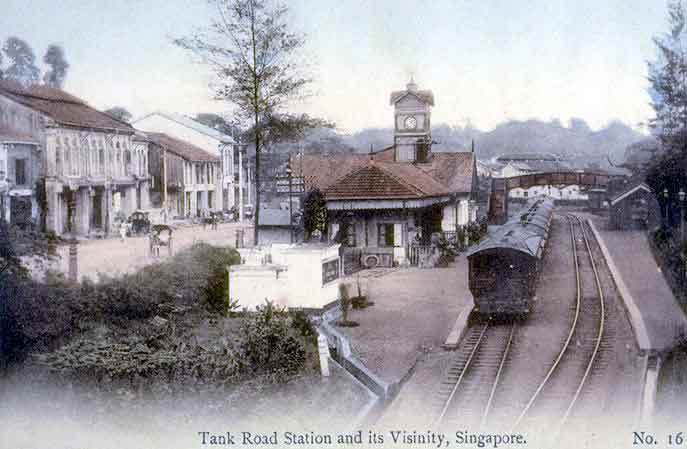
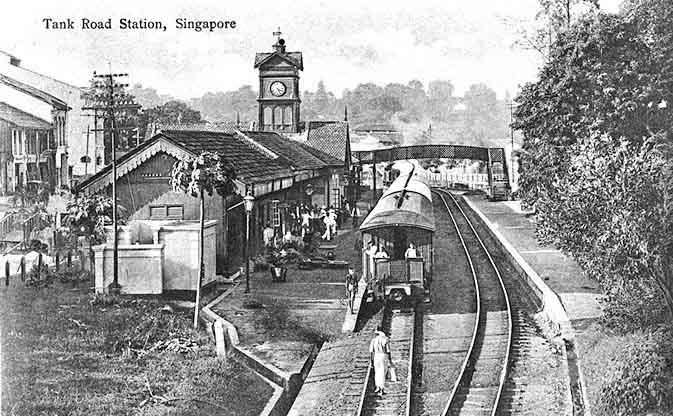
Above: An additional extension to the station buildings suggest at least another year or two have passed. The locomotive appears to be a class A 4-4-0T built by Hunslet.
Below: The growth of the banana plants and other bushes suggest that a few more years have elapsed
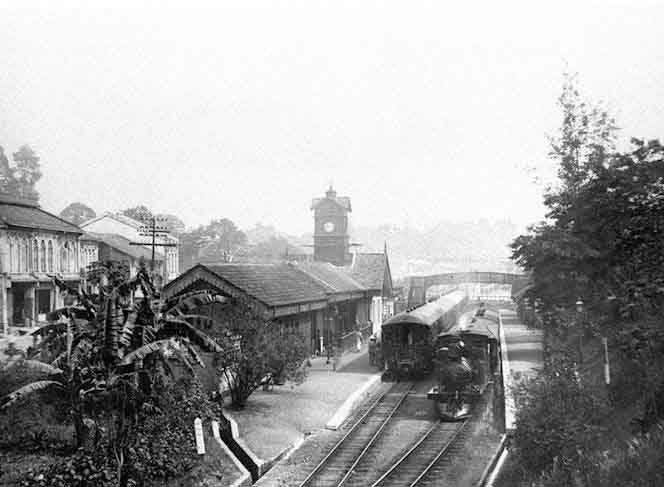
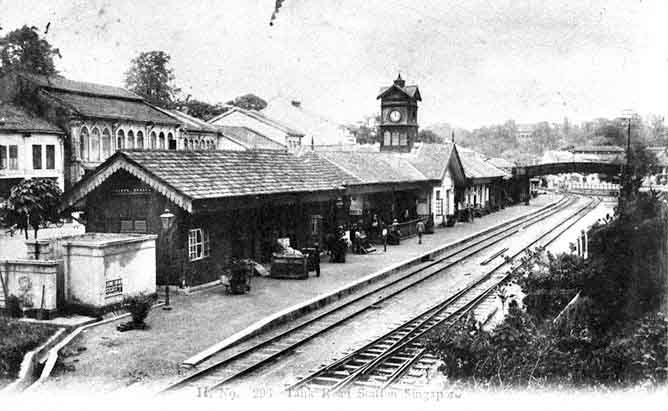
Above: An additional point has been added where the loop previously ended so this has been taken after the Fort Canning Road bridge had been widened to take double track.
This last picture below was possibly taken from the same bridge as the one above but looking south. The old station would have been on the left and the depot on the right. The building in the background is on River Valley road and is the United Engineers Limited building.
Pictures of the rest of the line
Last updated 3rd June 2020.
This page has been visited times.